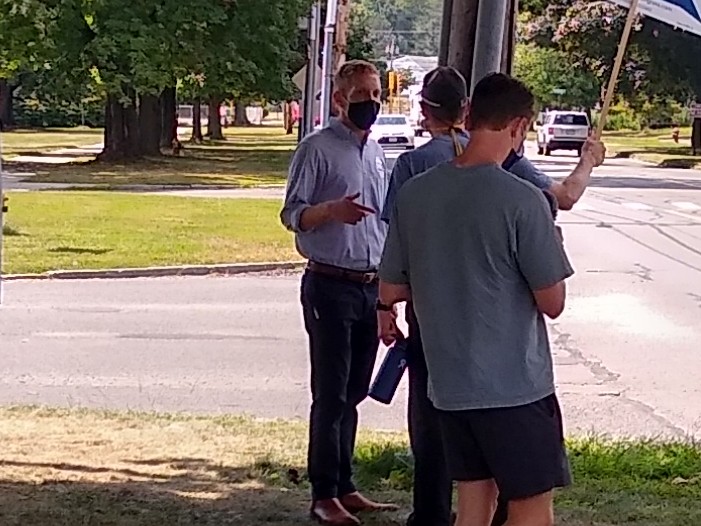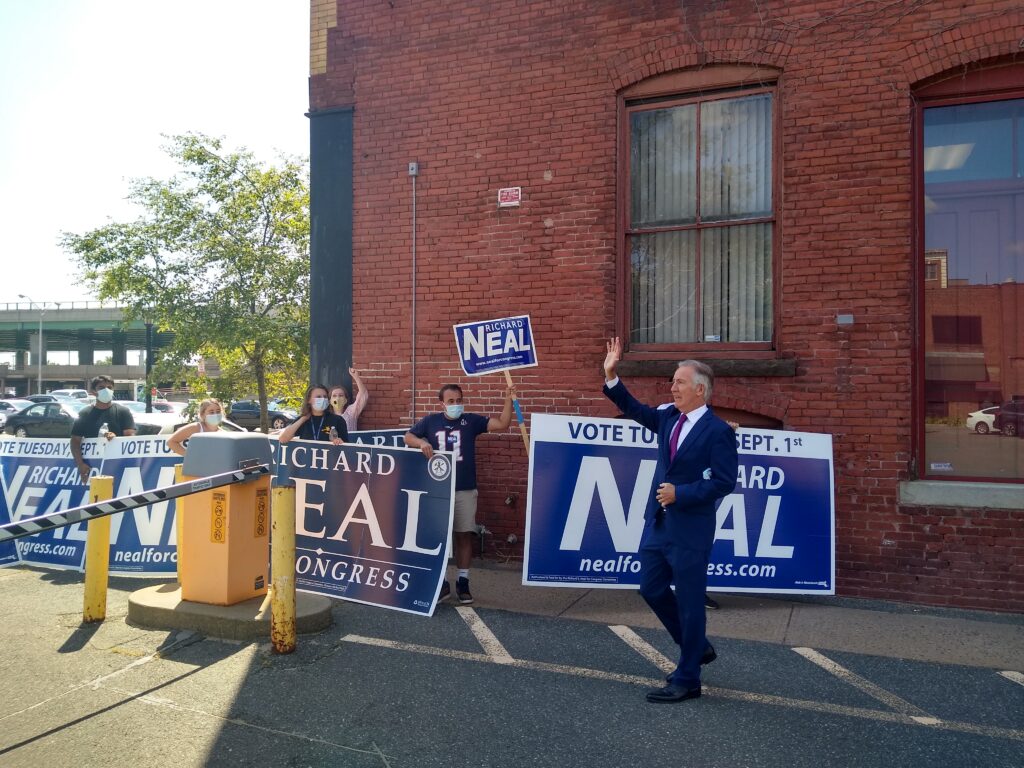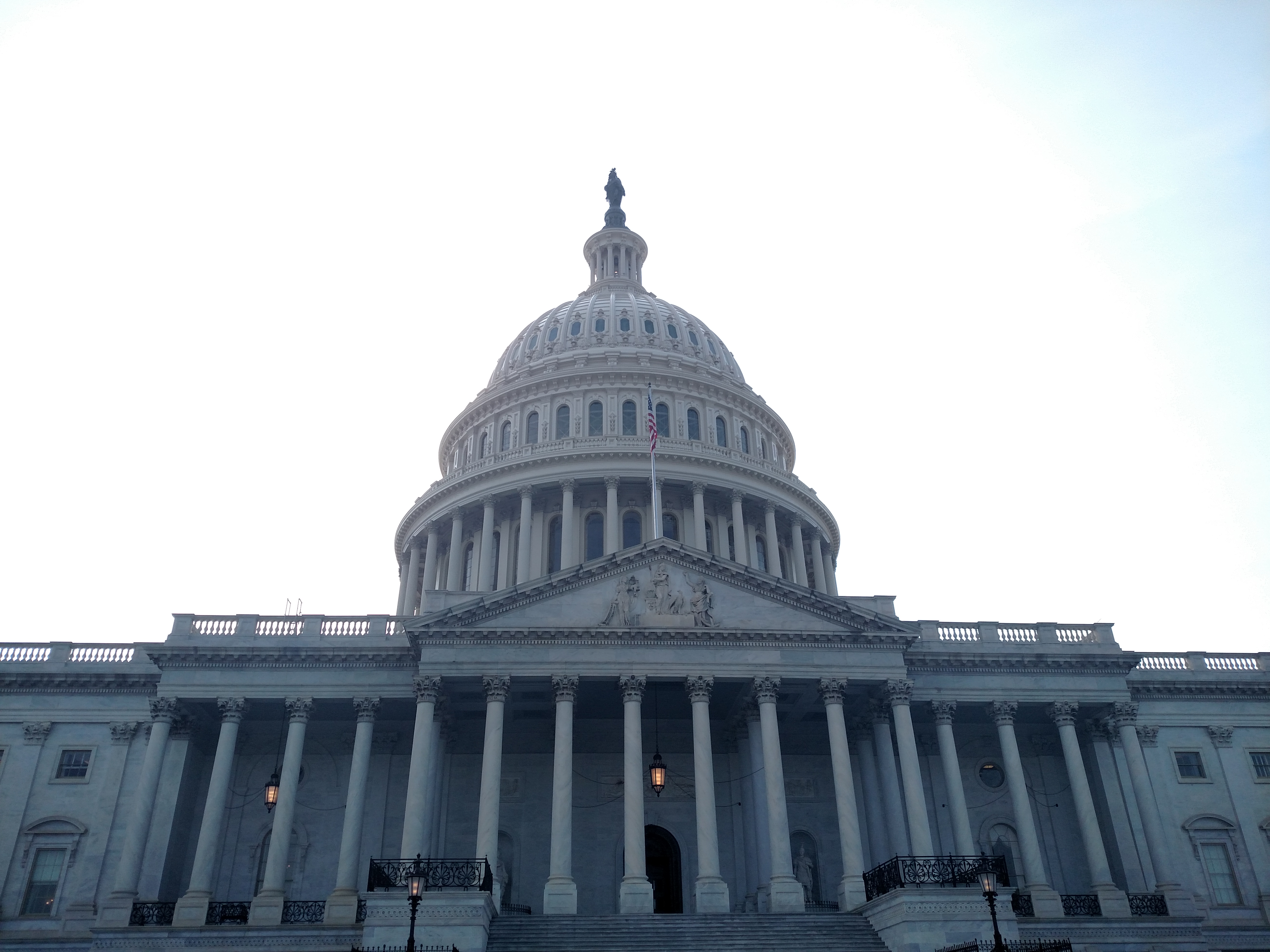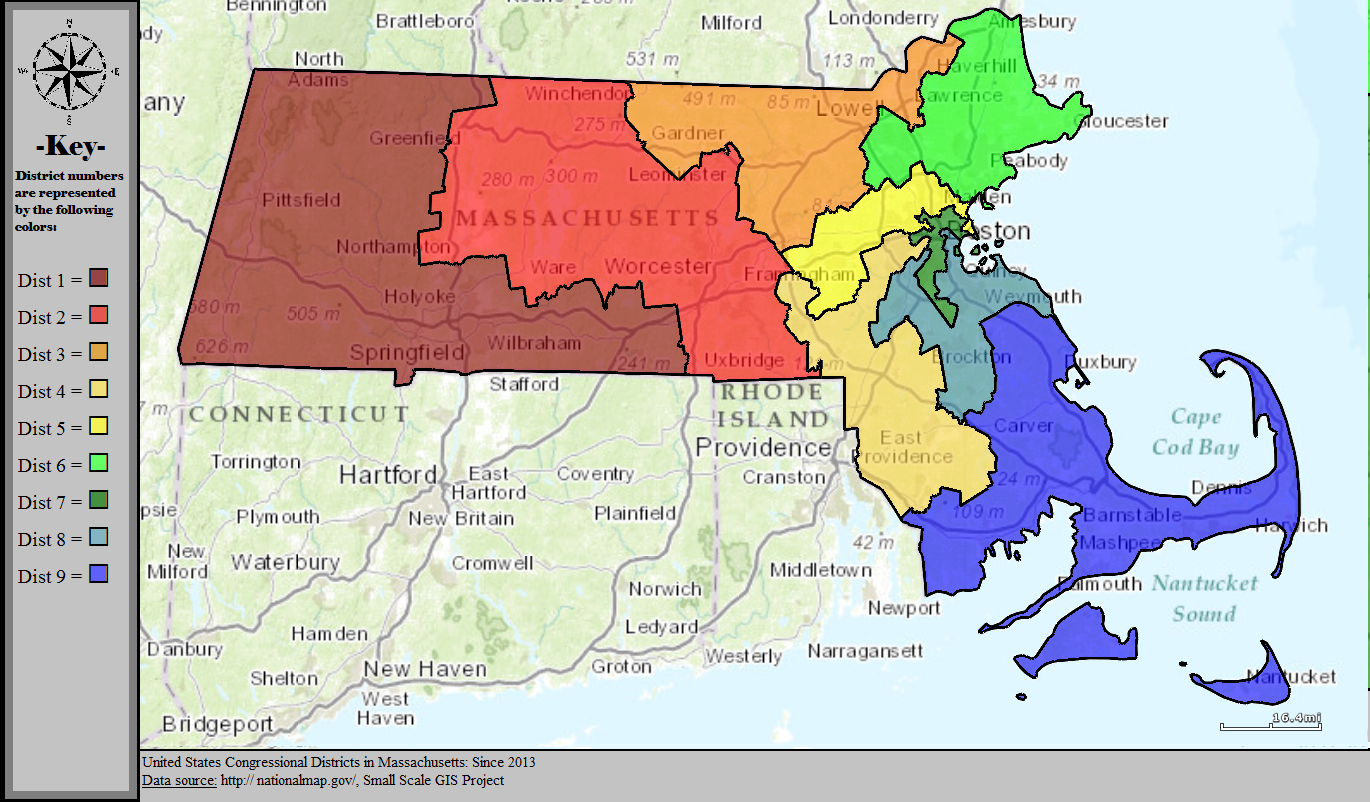One Final Accounting of First District Campaign Finances
UPDATED 10:59AM: For clarity on events from this month.
As the sharp, bitter and increasingly embellished Democratic primary for the First Congressional district comes to a close, the money is now flowing on both sides. Congressman Richard Neal has never wanted for funds, but Holyoke Mayor Alex Morse’s bid has limped along without much cash. That has changed since Morse’s campaign turned the bizarre events of this month into a font of the larger donations he had lacked.
The full length of the money train is unclear as the pre-primary reporting period closed on August 12. Yet, it was enough to outraise Neal, even as the incumbent massively outraised the mayor overall. Periodic reports required between the closing period and the election show Morse raking in big checks from lawyers and financiers. Neal’s fundraising has continued apace as well, with contributions coming in from a familiar crop of political action committees.
Massachusetts’s 1st Congressional district includes virtually all of Berkshire and Hampden counties, the western fringes of Franklin and Hampshire counties, and southwestern Worcester County. No Republican is running so the winner of the primary will almost assuredly become the district’s next representative.
In the period that ran from July 1 to August 12, Morse raised $475,000 increasing his overall fundraising since last July by 50%. According to campaign press releases, much of this came in the days after College Dems of Massachusetts claimed Morse was in the wrong for dating students, namely those from UMass-Amherst where he had taught. Morse has denied any relationships with any of his students and there are no allegations anything was not consensual. However, part of the grounds for the College Dems’ claims later became compromised.
Morse, who is gay, and his allies in LGBTQ circles have ably leveraged events to goose fundraising. The challenger has received a host of large and even maximum contributions this month.

Mayor Morse campaigning last weekend. Face coverings are still required but campaign finances though Aug 12 have been unmasked. (WMP&I)
After the pre-primary reporting period, candidates must report contributions that exceed $1000 within 48 hours. Since August 12, Morse has raised at least another $83,000.
Neal’s pre-primary report shows him raising over $367,000. It is the only reporting period that Neal has raised less than Morse. However, his 48-hour reports since August 12 show him raising another $178,000 in contributions.
As of August 12, Neal had not quite $2.8 million cash on hand. His opponent had $296,000 cash on hand as of the same day.
Morse has made an issue of Neal’s contributions from corporate political actions committees. Morse has not limited the size of his donations he receives. His vow to refuse corporate PAC money does not exclude individuals tied to industry from giving directly.
While ultimately individuals directly or indirectly fund them, PACs can be affiliated with industry groups, corporations, labor organizations, non-profits or individuals. Neither corporations nor labor unions can donate to the candidates’ campaigns for federal office. In debates, Neal has argued his fundraising does not influence his actions. He has also said he has supported every campaign finance reform law that has come before the House, including a constitutional amendment to repeal Citizens United.
From the start of the cycle to August 12, Morse has raised $1.3 million and Neal has raised $3.7 million. However, Neal began the cycle with $3.3 million.
On the spending side of the pre-primary report, funds have overwhelmingly gone into advertising.
According to Morse’s pre-primary report, he spent over $493,000. His campaign spent about $22,000 on staff and another $4000 in related taxes.
Morse spent nearly $368,000 on media in this period. Some likely went to video production or online advertising. However, Morse most bought ads. He had ordered a considerable amount of advertising last month and has only bought more since.
Morse spent another $30,000 on consultants for analytics, fundraising and compliance. Remaining expenses were for food, travel, software and other incidentals.

Cong. Neal greeting supporters after the first debate. He bought way more than big signs this reporting period. (WMP&I)
In the pre-primary period, Neal spent $1.8 million. The largest share went to advertising: at least $1.3 million. This is consistent with ad contracts reported to the Federal Communications Commission. It is not clear if that figure also includes digital ads, which Neal is definitely buying, too.
The campaign spent $88,327 on wages for payroll and another $27,249 for payroll taxes. Printing and mailing costs totaled approximately $185,000 and consultant costs reached nearly $184,000 in this period. The consultants were for strategy, messaging and research. Neal’s others costs were for food, travel, software, payroll service fees, rent and a few donations.
Despite the eye-popping figures represented by the campaigns, third parties have easily spent millions more. Among the groups spending the most money to benefit Neal—or bash Morse—are the American Hospital Association and American Working Families, a labor-aligned SuperPAC. On Morse’s side—or at least thrashing Neal—were the Justice Democrats’ PAC, Indivisible’s PAC and Fight Corporate Monopolies (FCM). The first two are standard-issue PACs, but FCM is a dark money group which will not disclose its donors before the election. Each of these have spent hundreds of thousands of dollars.
Much of this spending went to television, but considerable expense has gone into mailers and online advertising. This class of spenders is throwing in less than $100,000. For example, the Massachusetts Nurses Association, has spent $42,000 on mailers and online ads, mostly in support of Morse. Neal benefactors include the American College of Radiologist’s PAC ($43,000) and the National Association of Realtors’ PAC ($62,000).
Where recent ad spending has gone may offer some insight about the state of the race. The First District crosses three media markets. Much of the population is in the Springfield media market. The sparsely populated Worcester County part of the district is effectively in Boston’s market. The Berkshires are in Albany’s media market (although WWLP is available to Berkshire County cable customers).
The Springfield market at this point is saturated with ad buys. There have been some additional buys on cable where inventory still exists, but the broadcasters seem nearly full. Both candidates have increasingly turned to radio in the Springfield area. Yet, in the last few weeks, both campaigns bought more space in the Albany market
This makes sense as Morse probably cannot win without running the table in the commonwealth’s westernmost frontier. However, this is a necessary but not sufficient condition for the mayor to win, absent something extraordinary happening districtwide.
The other federal primary affecting the region in the Senate contest between incumbent Ed Markey and his challenger, Congressman Joseph Kennedy. In the pre-primary period before July 1 and August 12, Kennedy raised just south of $1 million in this time and spent $4.3 million. He had nearly $1.4 million cash on hand. Markey raised $1.5 million and spent $2.8 million, leaving him with $3.5 million cash on hand. However, both candidates have continued to rake in heaps of cash since the pre-primary period closed. Both also have SuperPACs raising and spending handsomely for them.

